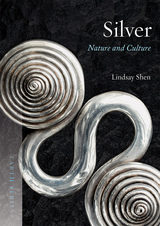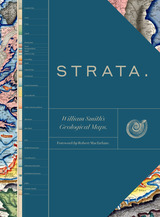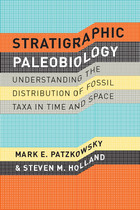6 start with S start with S

As Lindsay Shen shows, while always valued for its beauty and rarity—used to bolster dowries and pay armies alike—silver today is also exploited for its chemistry and can be found in everything from the clothes we wear to the electronics we use to the medical devices that save our lives. Born in the supernovae of stars and buried deep in the earth, it has been mined by many different societies, traded throughout the world, and been the source of wars and the downfall of empires. It is also a metal of pure reflection, a shining symbol of purity. Featuring many glistening illustrations of silver in nature, art, jewelry, film, advertising, and popular culture, this is a superb overview of a metal both precious and useful, one with a rich and eventful history.


Since 1900, the science of geology has grown in a spectacular fashion. Not only have field studies been undertaken throughout vast areas of the earth’s surface previously unexplored or only superficially surveyed, but recent discoveries in physics, chemistry, and biology have provided geologists with new techniques of observation and experimentation, and radically new concepts and theories have been developed. This book presents source literature for the most important contributions to this remarkable expansion of geological knowledge. One of the world’s most distinguished geologists provides excerpts from sixty-five articles by sixty-three authors, selected with the advice of more than a score of leading scientists from all parts of the globe. Among the subjects discussed in this comprehensive volume are the constitution of the earth’s interior, the causes of earthquakes, radioactive timekeepers, the interpretation of submarine features and deep-sea cores, the origin and entrapment of petroleum, and crystal structure. Included are articles which led directly to the development of theories of paleomagnetism, metamorphism, cryopedology, and isostasy.
Source Book in Geology, 1900–1950 makes available several papers previously to be found in the libraries of only a few universities, and eight articles translated into English for the first time, of which four are by leading Soviet geologists.

This sumptuous volume begins with an introduction by Douglas Palmer that places Smith’s work in the context of earlier, concurrent, and subsequent ideas regarding the structure and natural processes of the earth, geographical mapping, and biostratigraphical theories. The book is then organized into four parts, each beginning with four sheets from Smith’s hand-colored, 1815 strata map, accompanied by related geological cross-sections and county maps, and followed by fossil illustrations by Smith contemporary James Sowerby, all organized by strata. Essays between each section explore the aims of Smith’s work and its application in the fields of mining, agriculture, cartography and hydrology. Strata concludes with reflections on Smith’s later years as an itinerant geologist and surveyor, plagiarism by a rival, receipt of the first Wollaston Medal in recognition of his achievements, and the influence of his geological mapping and biostratigraphical theories on the sciences—all of which culminated in the establishment of the modern geological timescale.
Featuring a foreword by Robert Macfarlane, Strata is a glorious testament to the lasting geological and illustrative genius of William Smith, a collection as colossal and awe-inspiring as the layers of the Earth themselves.


To understand continental drift and plate tectonics, the shifting and collisions that make and unmake continents, requires a long view. The Earth, after all, is 4.6 billion years old. This book extends our vision to take in the greatest geological cycle of all—one so vast that our species will probably be extinct long before the current one ends in about 250 million years. And yet this cycle, the grandest pattern in Nature, may well be the fundamental reason our species—or any complex life at all—exists.
This book explores the Supercontinent Cycle from scientists' earliest inkling of the phenomenon to the geological discoveries of today—and from the most recent fusing of all of Earth's landmasses, Pangaea, on which dinosaurs evolved, to the next. Chronicling a 500-million-year cycle, Ted Nield introduces readers to some of the most exciting science of our time. He describes how, long before plate tectonics were understood, geologists first guessed at these vanishing landmasses and came to appreciate the significance of the fusing and fragmenting of supercontinents.
He also uses the story of the supercontinents to consider how scientific ideas develop, and how they sometimes escape the confines of science. Nield takes the example of the recent Indian Ocean tsunami to explain how the whole endeavor of science is itself a supercontinent, whose usefulness in saving human lives, and life on Earth, depends crucially on a freedom to explore the unknown.
READERS
Browse our collection.
PUBLISHERS
See BiblioVault's publisher services.
STUDENT SERVICES
Files for college accessibility offices.
UChicago Accessibility Resources
home | accessibility | search | about | contact us
BiblioVault ® 2001 - 2024
The University of Chicago Press









